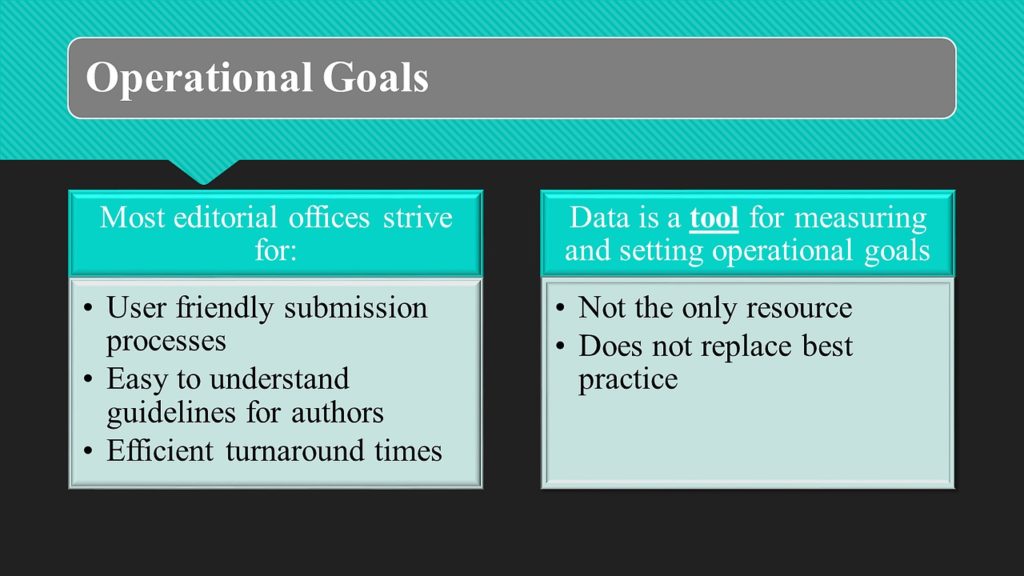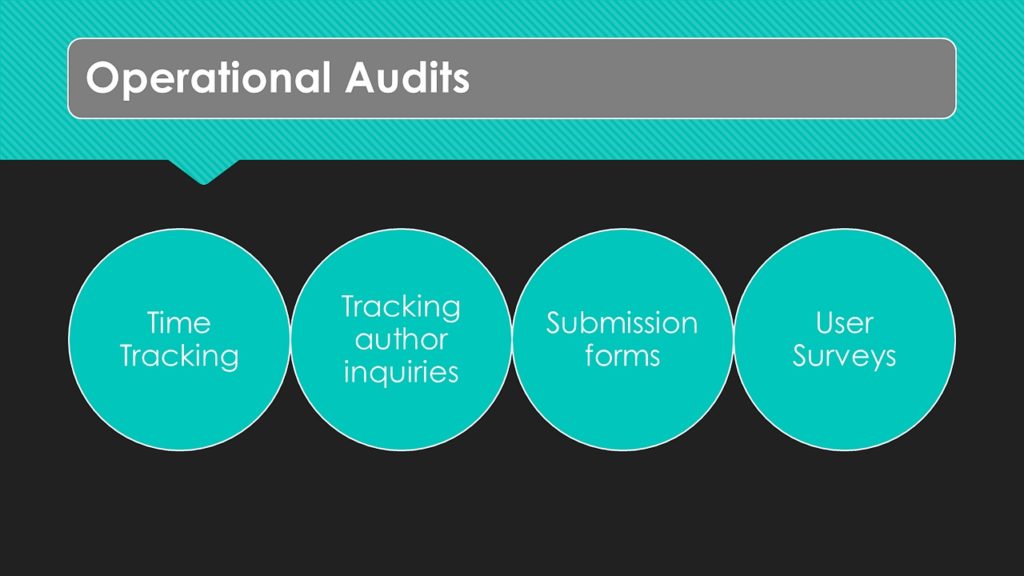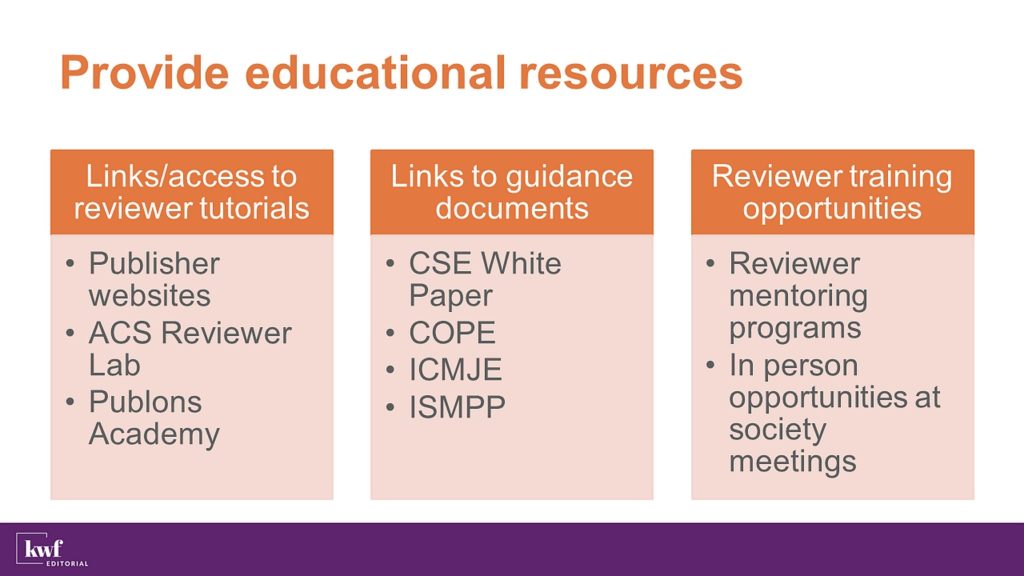MODERATOR:
Jennifer Deyton
Senior Partner
J&J Editorial, LLC
Cary, North Carolina
SPEAKERS:
Jennifer Cox
Editorial Client Manager
J&J Editorial, LLC
Cary, North Carolina
Kelly Hadsell
Editorial Director
KWF Editorial
Baltimore, Maryland
REPORTER:
Christina Nelson
The Journal of Bone and Joint Surgery, Inc.
Needham, Massachusetts
Utilizing an evidence-based approach to improving workflows and resolving issues is a smart way to obtain the attention and support of the often fact-minded scientific editors and key decision makers in the editorial office. In this session, the panelists described their various approaches to data that has informed their decisions regarding best practices for two key aspects of the submission process: author guidelines and reviewer resources.
Jennifer Cox first offered some examples of when usage numbers and demographic information has served to enhance the author guidelines for several of the journals she works with. Instructions for authors, which tend to be the first form of communication an author has with a publication, can particularly benefit from a close look at statistics. For the benefit of international authors, it may be a good idea to examine how readable the manuscript guidelines are to a non-native speaker. Similarly, multiple instances of incorrect answers during the submission process may indicate the need to clarify or reword how certain submission questions are presented. As another example, a demonstrated increase in the number of papers with 100+ authors could signal a need to consider author limits on future manuscripts. Monitoring submission trends with this mindset allows editorial offices to quickly respond and adapt to changes that could otherwise develop into potential workflow issues (Figure 1).

Cox also highlighted the value of both the custom and standard reports that are readily available to journal staff in most manuscript submission systems. For example, an audit of declined papers could reveal a disproportionate number of rejections for a particular article type. This in turn may indicate a need to revisit the wording of how that article type is defined to authors or signal a need to enhance the guidelines surrounding what is acceptable for that article type. Using this data, journal staff can then proactively address author issues and improve the author experience.
It also can be helpful to perform regular internal operational audits to optimize staff productivity and user satisfaction (Figure 2).

Editorial offices may consider performing time-tracking studies using various apps and tools such as Toggle to identify process improvement needs among staff. Monitoring comment themes among email inquiries and author feedback surveys can also reveal pain points that then can be addressed, potentially saving time and frustration.
Reviewers also can benefit from data-informed approaches to optimizing the review process. Speaker Kelly Hadsell detailed some of the best practices that her publications have employed to support this key group. As a starting point, author feedback has indicated the need to have clear policies regarding the role of reviewers during the review process. In this regard, the CSE White Paper1 serves as a good reference tool for learning about the overall guidelines and responsibilities of reviewers.
One trending area of development is the emergence of online reviewer courses. These tend to be free of charge and can be utilized by reviewers across many disciplines. Notable courses to explore include the ACS Reviewer Lab and Publons Academy.2,3 Additional reviewer resources include the Committee on Publication Ethics website, materials on the CSE website, as well as the International Society of Managing and Technical Editors’ website (Figure 3).4–6

Educating a journal’s existing pool of reviewers can also be an effective way of managing the challenge of not having enough qualified reviewers for a given topic. If a society or publisher has the resources available, reviewers can also benefit from in-person training opportunities at conferences and mentoring programs with more experienced reviewers or editors. In this area, data can be very helpful in identifying areas of need, determining which approaches to take, and evaluating the success of new initiatives.
Both speakers illustrated the importance of considering data in several aspects of the publication process. While there are several ways to obtain this information, it was clear that a focus on the facts and willingness to act upon them will yield the most effective results when aiming at optimizing the workflow, which in turn results in happier authors, reviewers, and staff.
Links
- https://www.councilscienceeditors.org/resource-library/editorial-policies/white-paper-on-publication-ethics/
- https://www.acsreviewerlab.org/
- https://publons.com/community/academy/
- https://publicationethics.org/resources/guidelines-new/cope-ethical-guidelines-peer-reviewers
- https://www.councilscienceeditors.org/resource-library/editorial-policies/
- https://www.ismte.org/
